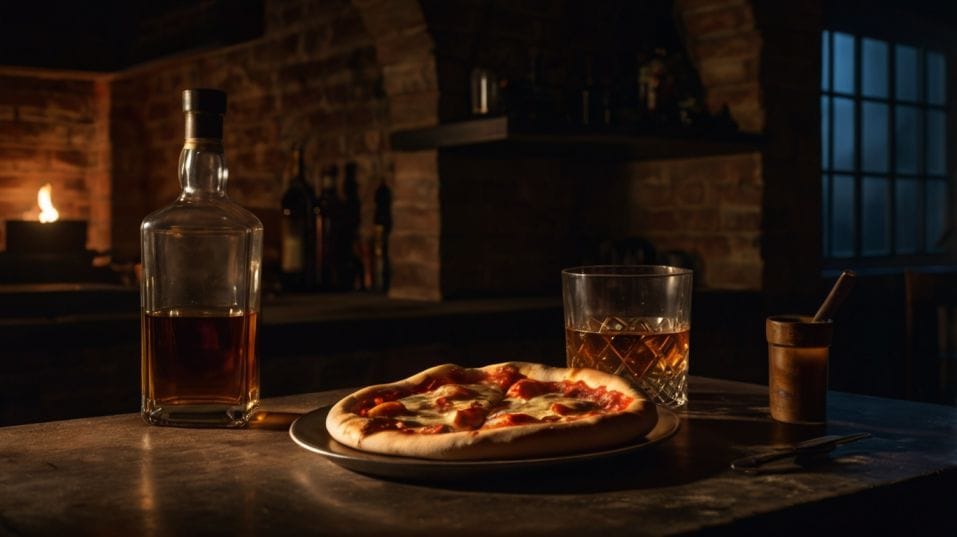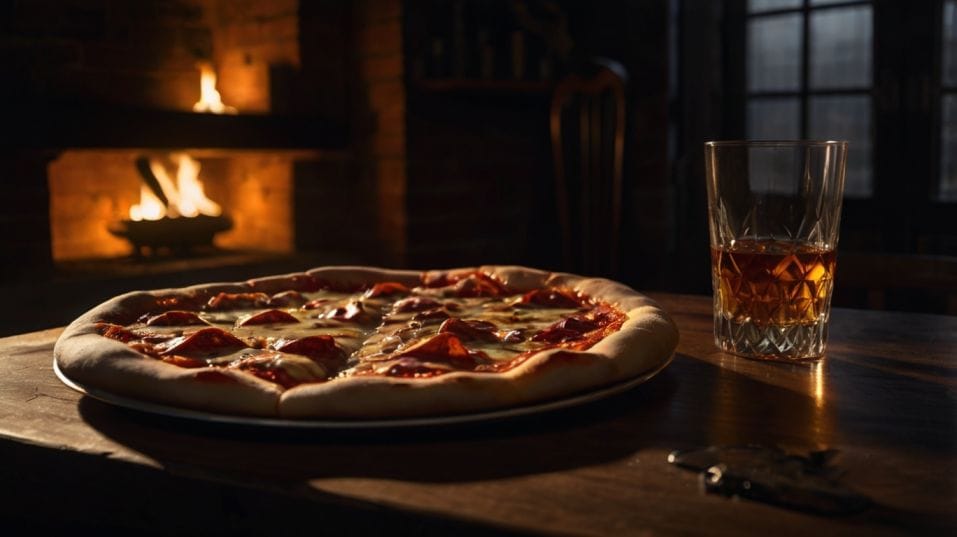Whiskey and Pizza? Try This Before Judging
Think whiskey and pizza don’t mix? Discover why this bold combo sharpens your palate and teaches you how to drink, taste, and collect smarter.

Think whiskey’s too refined for greasy pizza? Think again. If you’re early in your whiskey journey, there’s no faster way to sharpen your palate than this unlikely pairing. Pizza doesn’t just clash—it challenges.
It exposes whiskey’s depth, balance, and texture in real time. Forget stuffy tastings. You’ll learn more with one slice and one pour than in any flight lineup. Ready to taste like you mean it?
Why Pizza Works (And Why That Matters)
Good pizza isn’t a one-note experience. It’s a stacked combination of dough (sweet, yeasty, soft), tomato sauce (acidic, spicy, sometimes sweet), cheese (fatty, salty, often aged), and toppings that range from smoky and meaty to funky and vegetal.
That’s a complete flavor spectrum in a single bite. Now think about what whiskey brings: heat, spice, grain sweetness, barrel tannin, texture, and sometimes smoke.
When you match whiskey against pizza, you’re not just “pairing”—you’re measuring how flavors amplify, contrast, cancel, or evolve.
And that’s the secret. Every sip against every bite becomes a mini-lab session. A bourbon with high rye content cuts beautifully through a fatty pepperoni slice.
A wheated bourbon might soften the acid of a tomato-heavy Neapolitan pie. A heavily peated Scotch suddenly seems tamer when it’s playing off mushrooms, charred crust, or sausage.
You’re not just drinking anymore. You’re tuning your palate. You’re learning how structure, not just notes, shapes a whiskey’s performance.

What This Teaches You About Whiskey
Drinking whiskey neat in silence under the right lighting is romantic, sure—but it only teaches you so much. Real skill comes from understanding how whiskey reacts under pressure.
Food adds pressure. It brings contrast and complexity. If you want to learn what proof, cask type, and grain bill really do, taste them against a mouthful of garlic oil or a smoky, oven-blistered crust.
Heat feels different
Proof can vanish or spike depending on fat and acid levels. A 120-proof single barrel may taste smooth next to pizza but aggressive alone. That’s a clue about its balance.
Texture reveals quality
Great whiskey holds its weight even when paired with greasy or acidic food. Thin or poorly matured whiskey will vanish. You’ll know the difference fast.
Grain character comes into focus
Against a simple Margherita, you might suddenly detect the dusty corn in a cheap bourbon—or the honeyed depth of a great one. Malted barley becomes clearer, rye pops, and wheat softens the sharp corners.
This is real-world whiskey education. You’re not memorizing. You’re experiencing.
Skip the Fancy Rules—Here’s How to Actually Do It
Forget the wine-style food pairing mindset. Whiskey isn’t about perfect harmony. It’s about tension—contrast, weight, and response. So here’s how to make this work without overthinking it.
Choose whiskey with backbone
Proof matters. A 90–110 proof whiskey tends to work best with pizza. Under 86 and it gets lost. Over 115 and it can blow out the food. But every bottle behaves differently—use this as a benchmark, not a rule.
Taste in sequence
Start with a sip neat. Taste the whiskey’s structure. Then take a bite of pizza. Feel the fat, the acid, the crunch. Then sip again.
Notice what changes. That second sip tells you everything: did the whiskey collapse or rise? Did sweetness come forward? Did spice vanish?
Pay attention to finish
Great pairings reveal themselves in the finish. If the whiskey lingers, evolves, or complements the flavor left in your mouth—pay attention. If it clashes or disappears, that’s useful too.
Repeat. Don’t rush
You’re not doing a tasting flight. You’re calibrating. Go back and forth slowly. You’ll start noticing not just flavor, but interaction—how texture, proof, and balance play against each slice.
What This Teaches You About Collecting
Here’s where it gets interesting.
Most whiskey collectors start by chasing age, proof, or brand hype. But real collectors—the ones with tight, focused shelves—build based on knowledge.
They know how a bottle performs. Not just how it tastes alone, but how it shows up when tested. That’s why tasting in everyday contexts matters. It reveals versatility, not just novelty.
You might realize a younger rye outshines your expensive Scotch when paired with mushroom pizza. That doesn’t make the Scotch worse—it just tells you something about where and how it shines. And that insight sharpens your collecting instincts.
Over time, you’ll start categorizing whiskey by behavior:
- “Performs well with food”
- “Best neat, with air”
- “Needs a splash of water”
- “Falls apart under fat”
Now your shelf isn’t just full—it’s functional. You’re not guessing anymore. You’re curating.
Final Thoughts
You don’t need a pairing guide. You need guts. Whiskey isn’t precious—it’s powerful. And it was never meant to live in a bubble of glassware and reverence. So let it live. Let it clash, cut, calm, and clash again.
Start with what’s real. Open a bottle. Order a pizza. Taste with intent. Use what you learn. The best whiskey education isn’t tucked away in some tasting room—it’s in your mouth, right now, if you’re willing to notice.
So tonight, forget the tasting notes. Pour something with backbone. Grab a greasy slice. And watch your palate come alive.




